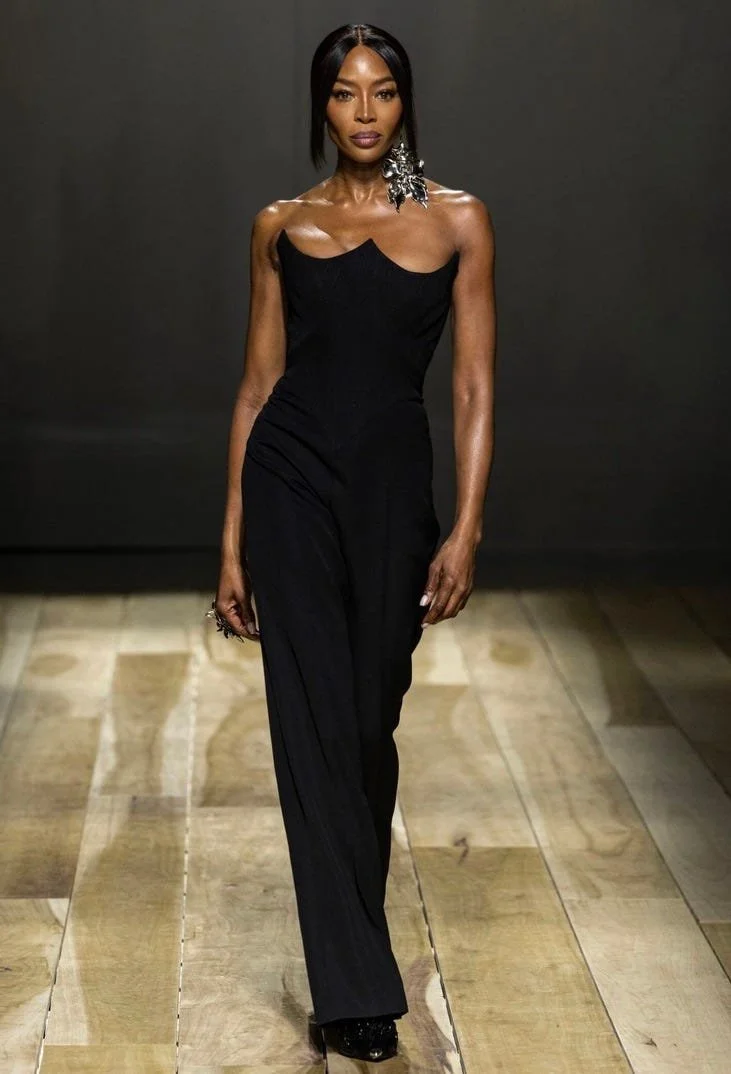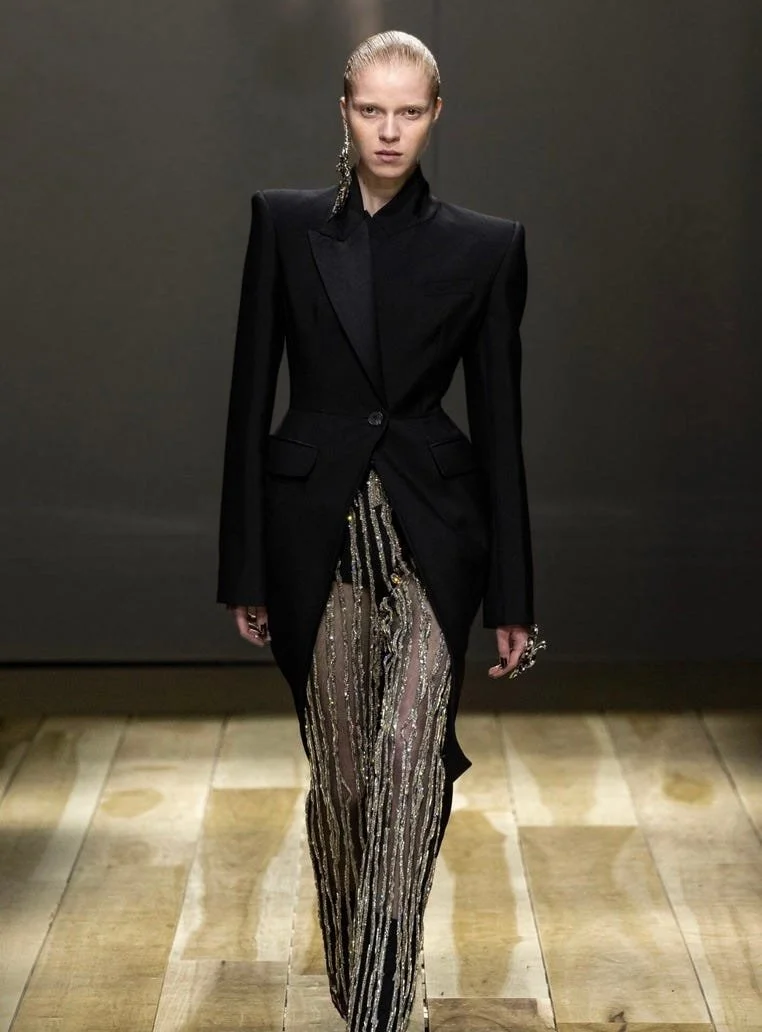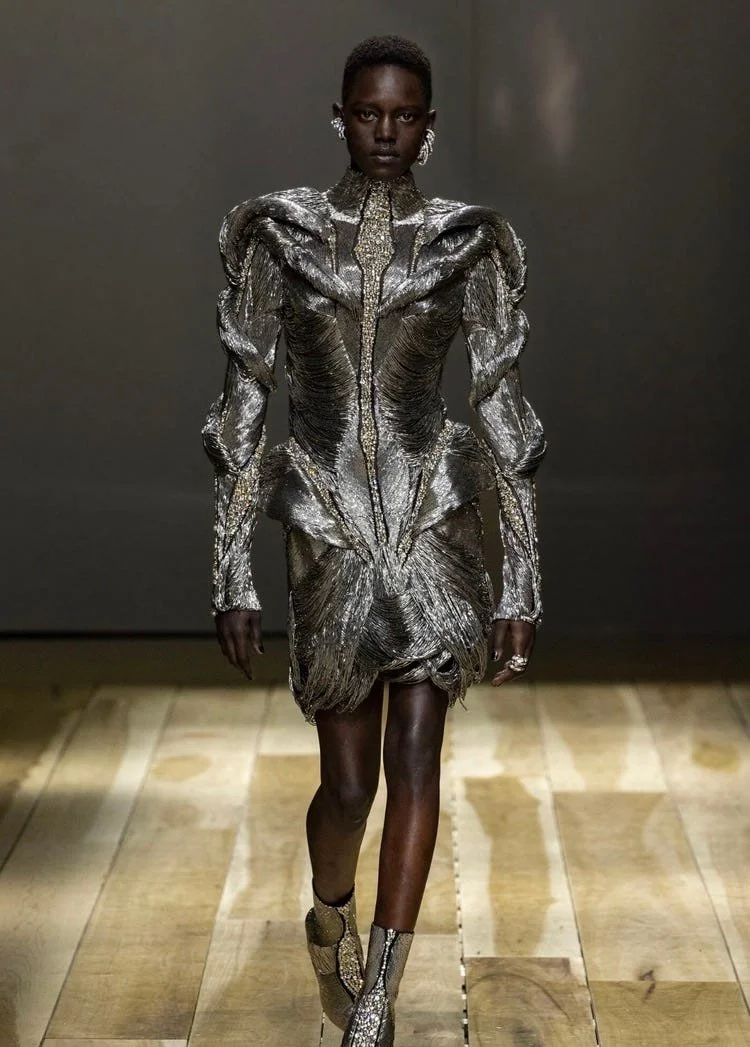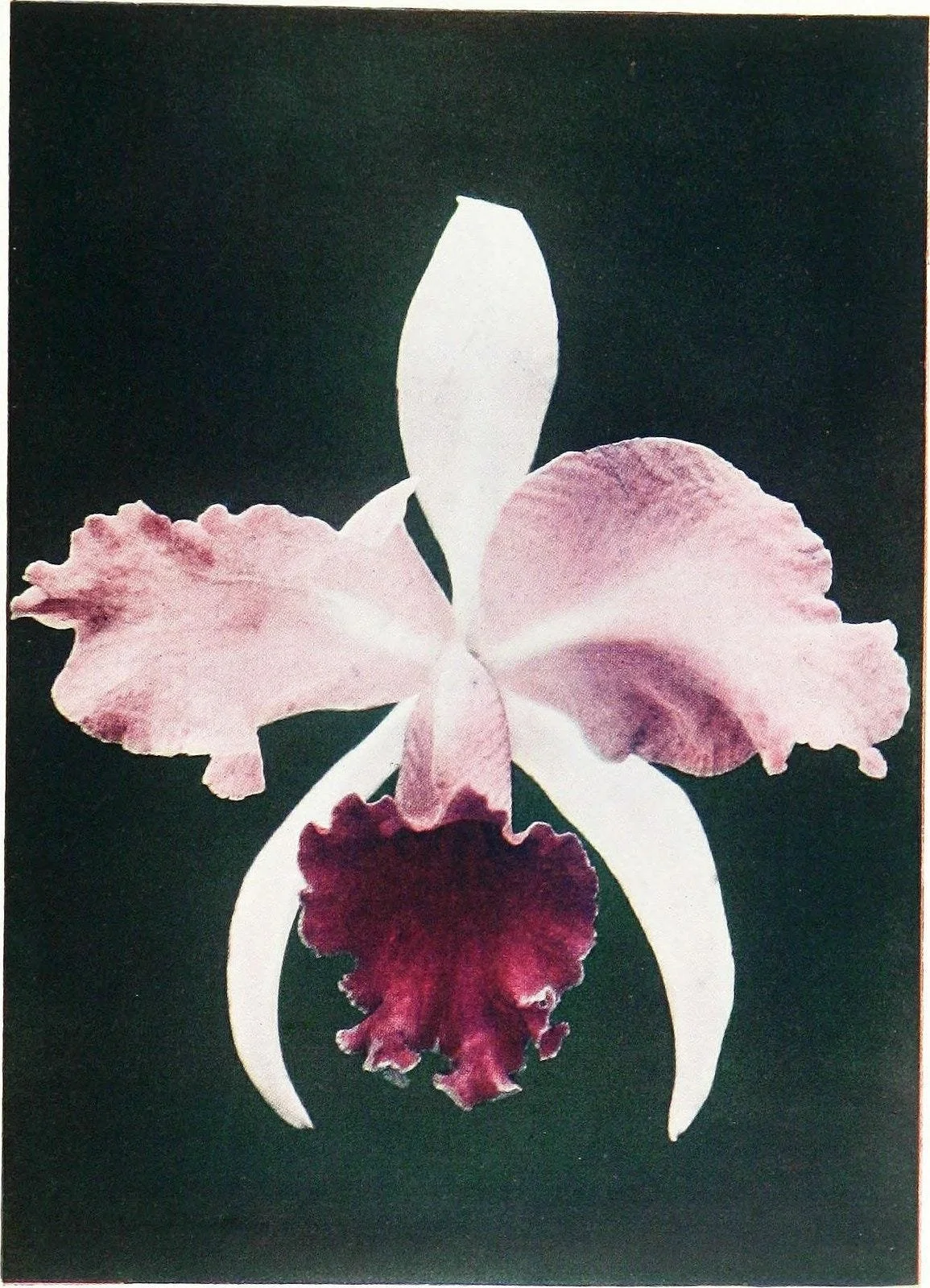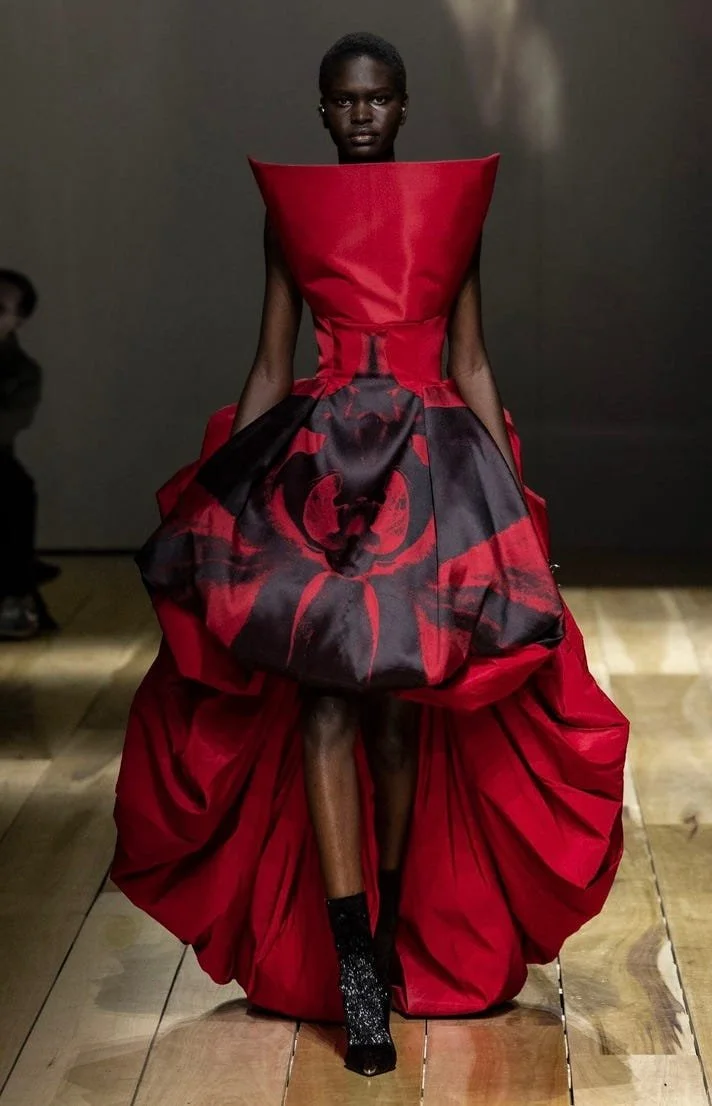Orchid Treasures on the Alexander McQueen Runway
Towards the end of last year, Alexander McQueen released its Autumn/ Winter 2023 Collection, a divine story of beauty and the human form designed by creative director, Sarah Burton. In the campaign, Burton describes how the Orchid is used as one of the central inspirations behind the collection, appearing as a motif in many of the looks. The opener, worn by Naomi Campbell, features an ornate silver Orchid flower in the form of an oversized earring, and in the looks to follow, images of Orchids sprawl across billowing fabrics, and silhouettes fluctuating between synched and voluminous mimic the unique shape of the delicate flower itself.
Images from AlexanderMcQueen.com
The collection honours the various shapes and shadows formed by both the human anatomy, and the contours of the Orchid . A series of tailored suits create narrow waists and contrasting broad shoulders while grandeur ball gowns offer layers of capacious fabric. Tops are cropped and necklines are cut into swooping peaks, silhouettes are manipulated through cutouts and hips are widened through framed bejewelled petticoats. Silver metallics make appearances in most of the looks, and in one look strings of silver hang like a suit of ornate armour, an armour that still somehow contains the elegance and soft tenderness of petals.
The Orchid is an ancient flower that grows in multiple geographic locations around the world. Because of its versatility, the symbol of the Orchid has been reflected in a variety of cultures and represents a variety of meanings. Confucius, references the fragrance of Orchids during a journey with his disciples, where he tells them of Orchids that bloom deep in the forest, where no one is near to admire its beauty and fragrance. To be a true noble gentleman is to display your righteous qualities even when no one is watching.
p. 419, ‘Orchids for Everyone’, Charles Henry Curtis, 1910
In Japan, Neofinetia Orchids were one of the first Orchids to ever be used as a houseplant, and are said to have been originally foraged by samurai in the mountains. In ancient Greece, Orchids were believed to hold strong prophetic qualities particularly for expectant mothers. The tubers of the Orchid plant could be used to determine the sex of a child- if the father of the baby ate large tubers it would be a boy and if he ate smaller tubers it would be a girl. In Victorian Antiquity, Orchids were only ever seen in wealthy homes due to their expensive price. For this reason, they earned a reputation of being a symbol of grandeur, riches, royalty and elegance.
Each look in this collection revives an aspect of one of the many lives of the ancient Orchid. Hanging sparkles imitate glinting samurai swords, heavy golden necklaces signify descendants of regal dynasties, and blooming patterns and pleats embody a blossoming of the female form. Like many flowers, the shape, textures, abilities and characteristics of the Orchid mirrors that of its human admirer. We exist in an amalgamated relationship with it. We learn from the withstanding beauty of the flower, we present the flower as a symbol of our own status, we put faith in the flower to lead us on the right path, and all the while we too display folds of soft skin like its petals, unique crevices and canyons like its head and the potential to unfurl and expand like its buds. In Burton’s summary of the collection, she describes how the Orchid, “thrives in the air, resists being rooted and grows in the wild”. Perhaps what makes this collection so special is the artistic merging of nature and anatomy that makes us want to be the Orchid: uproot and grow wildly with the wind.
